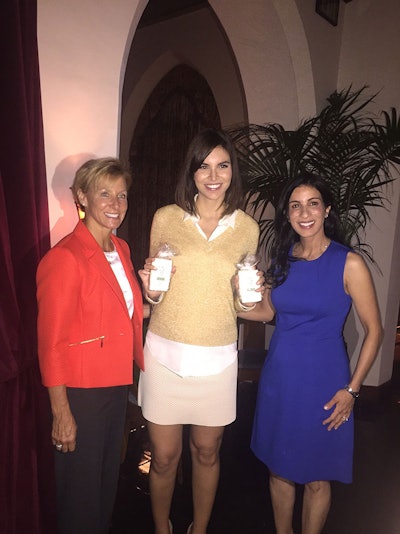
After watching his teenage daughter Marya struggle with acne, Dr. Kalil developed the VI Peel and launched VIDerm, a skin care line that addresses a variety of skin concerns. Fast forward to today and now Marya is the President and CEO of VI Aesthetics, continuing to grow and build the VI Derm portfolio with skincare regimens for a variety of skin types.
Recently, VIDerm celebrated the launch of it's newest product, VI Derm HQ Plus, a skin brightening/lightening product. This product addresses an issue that affects millions of people around the world, and over 5 million people in the US alone, unwanted pigmentation. The new product is packed with brighteners and botanicals combining science and nature to even out skin tone. One of the product's key ingredients is a 2% Hydroquinone, which works with the formula to block melanin formation and reduce pigmentation.
We had the chance to talk to an expert in Dermatology, Dr. Sonia Batra, about VI Derm HQ Plus. Dr. Batra earned her medical degree with honors from Harvard Medical School. She was a Section Head of Dermatology and Dermatologic Surgery at City of Hope and now has a private practice in Santa Monica, CA.
Dr Batra explains, “The product is a fading or lightening cream with 2% Hydroquinone and four botanical lightening agents. The idea is that the 2% Hydroquinone is over the counter —it’s tried and true. I’m a big proponent of the VI Peel which has been around for years.”
Who would be the ideal customer for this product?
Anyone who is hoping to maintain the results of an in-office procedure and keep brown spots at bay. The second type is someone who is suffering from brown spots and wants to try an over-the-counter product that is going to help fade it.
Some people are afraid of products that contain Hydroquinone. Do you have any insight about this ingredient that you can share?
It’s true that a lot of people do have concerns about it. I always tell my patients that the skin is actually a very effective barrier. That’s its function as an organ, to keep the outside world out, just like your heart is designed to pump. Very few of the ingredients that you are applying to your skin are ever absorbed to the point that you have to worry about toxins being in your blood stream. If you are worried about it, this is a nice product because it’s a lower concentration. Many people with severe Melasma are getting compounded forms of Hydroquinone that can be up to 8%.This is still a safe over-the-counter strength of only 2% which the FDA considers fine to use without even a prescription. It’s dove-tailing with some botanicals ingredients that boost the effectiveness without giving you quite as much HQ.
What do you think are the biggest skincare mistakes that women make without even realizing they are making them?
I think the biggest skincare mistake is not using sunscreen. I think people especially who don’t live in places where it’s sunny all year don’t realize how much UV damage they are accruing. Even people who live in snowy places are having UV reflected off of snow and that is what’s contributing to discoloration, fine lines and signs of aging. Another mistake that a lot of women make is not incorporating a skincare regimen early enough. If you start using excellent products early, you can maintain. Many women only start using the products after they are already seeing the signs of the damage, but you can make a much bigger impact if you start early.
Do you have some basic skincare tips that you can share?
Any basic skincare regimen should incorporate a good anti-oxidant because that’s going to prevent free radical damage that causes discoloration and fine lines. It should also include sunscreen. I’m a big fan of the mineral based sunscreens. The third component would be a cell turnover agent. The gold standard are obviously retinoids because they stimulate collagen and they help with fine lines and discoloration.











